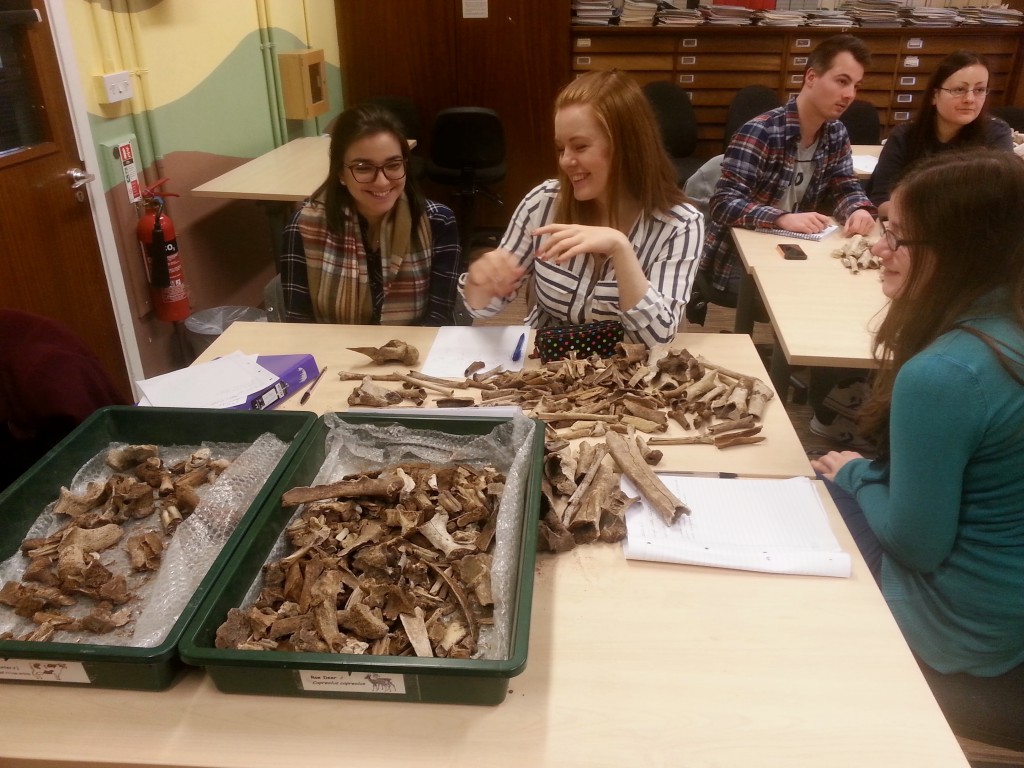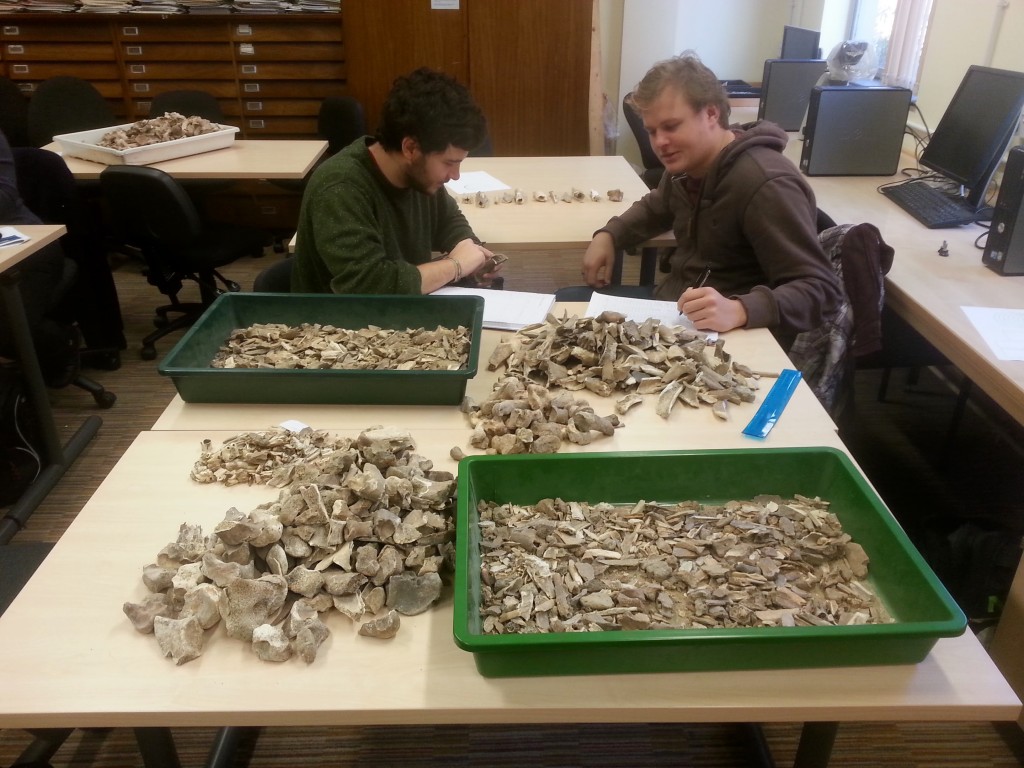One of the advanced osteology courses available to archaeology master’s students is Advanced Zooarchaeology, which aims to provide a sophisticated appreciation of the theory and practice of zooarchaeology and how bone assemblages can be interpreted. As part of this course students have been participating in a practical session on Fracture and Fragmentation in faunal assemblages. The students were split into three groups and given three different assemblages to work on – a waterlogged Iron Age site, a medieval castle and material from medieval Exeter.
Firstly the bones were separated into those on which fracture analysis could be performed. This involved separating long bone and mandible shaft fragments from cancellous material and whole bones. The students then took each bone in turn and calculated the Fracture Freshness Index and recorded the types of fracture present. This information was then turned into a mean Fracture Freshness Index and percentage of fresh fracture for the assemblages sampled and compared with each other. The levels of marrow processing and post-depositional/taphonomic fractures were interpreted and discussed.
The Advanced Zooarchaeology course is just one of the optional osteology courses on offer for students studying a master’s degree at the University of Exeter’s Archaeology department. For more information about our postgraduate courses visit the website.


